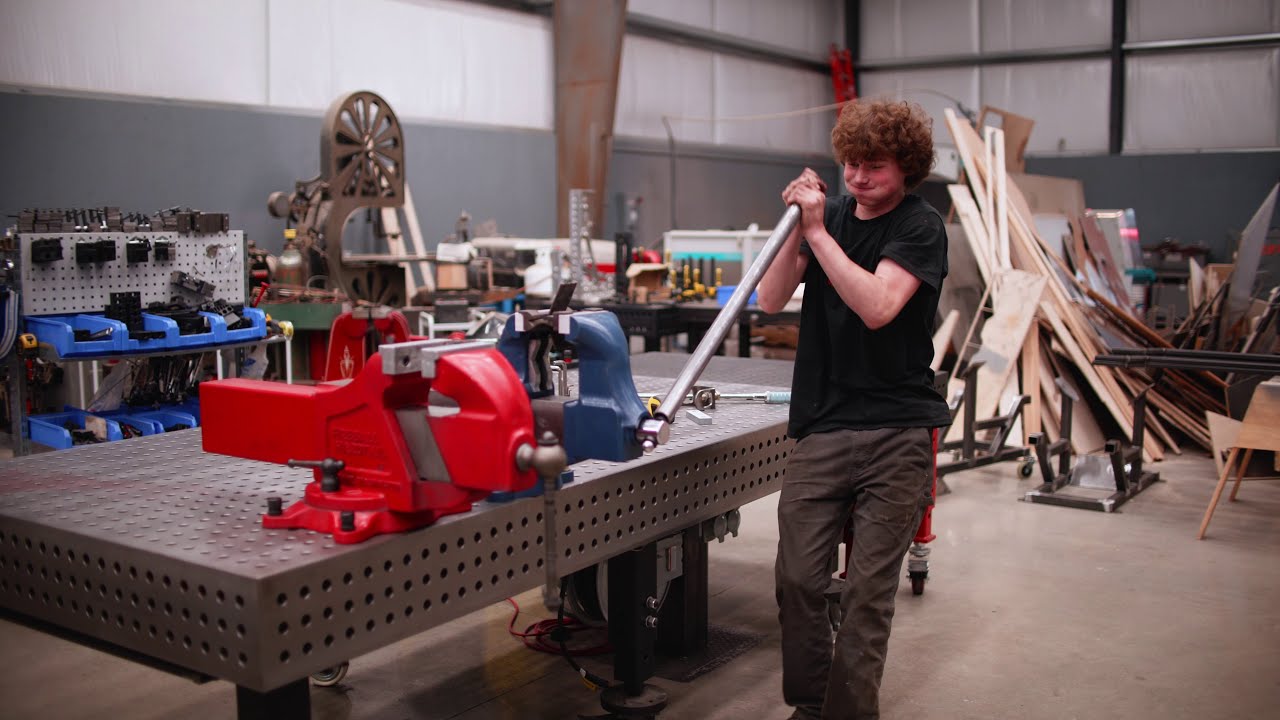Hey guys, I have recently found a USA made 1750 that is missing lots of parts. biggest issue being it has no lead screw, and rather than tracking down a new or used one I’m thinking I should buy some ACME rod and make my own, and add some thrust washers while I’m at it. does anyone happen to know the thread pitch that these old vises used? if I can get away with using the factory spindle nut in it that would be great but don’t want to spend the money on the rod if its not going to fit. also open to building a new spindle nut for a more efficient thread pitch, any tips and info would be great, thanks guys.
Stage 1 - think carefully about (and decide herefrom) whether you have strong preferences about how a vise acts (speed; clamping force; etc.) Because this is your chance to alter / customize that in a vise. To make a version of a commercial product that’s tailored to your style. => whether or not to do the nut as well.
Some people bend themselves. Some people bend the spoon. There’s no wrong answer.
Stage 2, if you want to keep the original nut -
Check that the nut isnt excessively worn (and is truly good to go in all other ways). If you’re choosing to go with the factory thread because one part is there, be damn sure it’s really there.
If you have the nut, you can determine thread characteristics from it (and therefore don’t need to risk buying the wrong threaded rod off of asking on the internet).
Stage 2, if you want to choose your own vise’ response through choosing thread -
watch the Fireball vid on experimenting to find out what really matters in vise screw characteristics. TLDR : You get all the power you could want out of screws of the type and size range you could use in that vise, so you might as well opt for versions that give you more of other things too, like speed of action. So fewer TPI.
To throw in my own point here : a vise with a thrust bearing up front is just a magical different creature to otherwise. And that includes in how the power is developed in the screw. Far less activaion of the handle to achieve the same thing. And if that’s the case, you don’t need any extra help from a thread that might have more mechanical advantage. And once again, you might as well choose a faster acting thread. IE the thrust bearing frees you to get the best of that world too.
I’m talking about pitch a lot because i think your 1750 uses 8 tpi, which is at the edge of the range of possibilities, so you have the option to reign it in a bit.
Stage 3 - Implement your choices. Whether your choice is “cheapest and fastest to get it working”; or “full custom”, the hardest part is always knowing what we actually want. The rest is admin.
Side note for IF YOU’RE MAKING YOUR OWN SCREW AND NUT :
Often, ridiculous things like who holds the rights (patents) to manufacture products using certain fundamental principles can leave what we see in commercial products as not representing all possibilities. Nor even the best. There’s a characteristic of lead screws that you don’t see used much that can get you a lot faster action with the same TPI. That’s the number of leads the screw has. Look into a two start thread if you really really want to rabbit hole this choice of yours. And / or, this is a note to check that your current nut is what you might assume.
Thank you so much! this is exactly the kind of information I was looking for, I’m defiantly leaning towards full custom. I want something that will be tailored to the way I want to use a vise, and speed and how smoothly it operates are the big ones, clamping force is a nice added feature, but anything will be an upgrade from my current little wilton.
I think you don’t give yourself enough credit as just a “hobbyist”
Good ad vise.
